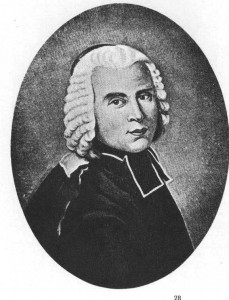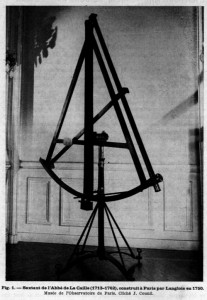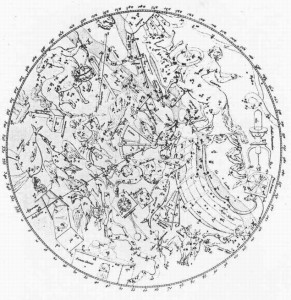|
Historical Index:
Introduction; Early Career; Travel to Cape; Achievements; After Cape Town; Career; Personal.
Introduction:
“The Abbe de la Caille,” as he was later to become, laid the foundations of Southern Hemisphere astronomy. He was the predecessor of all the later pioneers such as Maclear, Herschel and Gill. It has sometimes been suggested that La Caille’s achievements were largely vitiated by the lack of adequate instrumentation for his basic work, but a scientist of the stature of Sir Thomas Maclear did not think so and neither did Sir John Herschel, whose survey of the southern sky is now generally held by astronomers to have been the true starting-point of modern scientific work in this field. Had La Caille been able to use modern-type instruments as well, his work would have advanced our knowledge of southern-hemisphere astronomy by almost a hundred years. As it was, he showed later generations how to set about an intensive observing programme and his diligence in pursuing it, has become legendary. It is not from pure sentiment that a piece of charcoal from one of his signal fires is preserved at the Cape Observatory to this day. With several excellent works on mathematics and astronomy to his credit, La Caille was singled out. It was because of his proven competence and wide knowledge that when he later made an error in one of his major geodetic measurements (Arc of the Meridian), men of the calibre of Maclear and Herschel went to enormous lengths to discover how the calculations of such an expert could possibly have gone wrong. Establish the cause of La Caille’s mistake, they reasoned and an important scientific principle could be unearthed. They were right. [Copied Moore, pp. 29 – 31.]
Sir George Everest, Surveyor General of India (after whom the highest mountain in the world was named and who had many experiences with the effect of mountains on surveys), came to South Africa and inspected La Caille’s work. He realised what the mistake was that La Caille made, but it was left to Maclear to prove it. [Amod, p. 3]
Historical note: All the events described here play off against the background of the academic debate of the then “scientifically” accepted idea by Descartes of “fluid Vortices” in a space filled with an ill-defined medium to explain the movement (orbits) of solar system objects. La Caille was “a savant at the time of ‘enlightenment’, which was then sweeping the intellectual world, he was one of the first French apostles of Newton” [Copied Glass, p.1.] In contrast to Descartes idea was Newton’s theory of Gravitation based on the work done by astronomers such as Tycho Brahe and Johannes Kepler. However, Newton was English and those who supported his idea in France were seen as unpatriotic. The differences in ideas predicted for example that the Earth will have different shapes. Descartes hypothesis predicted that the Earth will have elongated poles and a flattened equator like a modern rugby ball. In contrast Newtonian gravity predicted the earth to have flattened poles and a bulging equator due to centrifugal forces (prolate ellipsoid) [Glass, pp. 7 – 12] La Caille became an important figure to prove Newton’s theory to be the correct one.
Early Career:
Lacaille received formal classical education & the religious title of Abbe was conferred upon him when he completed his studies. He did not pursue a career in religion.
Jacques Cassini of University of Bologna’s Observatory employed Lacaille to survey the French coast from Nantes to Bayonne. Lacaille impressed his peers with the quality of his work!
In 1739 Jacques Cassini employed Lacaille to re-measure the French arc of Meridian. (This was important to determine the size & shape of the earth). He did an impressive job!
The excellent work that that he did on the survey of the coastline & arc of meridian got Lacaille admitted to the French Academy of Sciences. He was appointed the chair of Mathematics at Mazarin College (now Institute of France). Here a small observatory was established for him.
Lacaille was working on the problem of how to determine longitude at sea. Related to this problem was to improve the accuracy of the predicted orbits of the Sun and Moon. Lacaille noted that 2 celestial events were going to present themselves in 1751: an opposition of Mars close to its perihelion and an inferior conjunction of Venus. He made a proposal to the Secretary of State for War for funding, as well as a presentation to the French Academy of Science. His request was approved. Lacaille chose the Cape Colony as his preferred destination. In his proposal he undertook to observe: (Glass pp.29-30)
- to determine the true position of the Cape.
- to determine by concerted observations, the parallax of the Moon.
- to observe the parallax (distance) of the Sun, a quantity even more uncertain than the parallax of the Moon.
- to complete the catalogue of the principal fixed stars, by the same method and with the same instruments with which he has already established the exact positions of the northern ones.
Travelling to Cape Town:
To obtain permission to stay over at the Cape was not easy. France had recently been at war with the Dutch. A complication was that the Cape was not ruled by the Dutch Government but by the commercial company called the Dutch East India Company. The proposal was thus handled at the highest diplomatic levels. What worked to Lacailles advantage was the recognition of scientific endeavor. The Dutch previously allowed the German astronomer Kolbe to visit the Cape, and Lacaille’s project was pitched as for the common good of all nations. The Dutch States-General grudgingly gave permission and requested that precautions should be taken to make sure that no improper use was made of it. (Glass, pp.30-31)
Lacaille arrived at Cape Town on 20 April 1751 and stepped ashore at 10 A.M. (Glass, p.39) [Forbes states 19th of April 1751]
Lacaille’s achievements while in Cape Town:
-Measure an arc of Meridian to prove the earth’s shape is oblate (flattened at the Poles)
-Provide a reliable catalogue of the Southern stars to aid navigation. He Chartered positions of almost 10 000 stars (9 766), grading them according to brightness. (Stoy, p.412.)
–Catalogue of Nebulae. In 1755 he dispatched to French Army a catalogue of 42 nebulae’s.
-Measured the Earth-Mars distance: and Lacaille arrived at value equal to 131 500 000 km (81 710 310 mile). [Koorts; MNASSA, April 2004, p.36]
-Measure distances to moon & closer planets.
-Daily record of weather & tides.
-Regular magnetic observations.
-Fixed longitude of Cape by using observations of the satellites of Jupiter.
–Measured height of Table Mountain. (Stoy, p.414.)
He drew up a number of constellations & named them. Some of the constellations are still in use today. Titles are in a shortened form. ”
Instead of the classical nomenclature of mythology, he used scientific instruments as the inspiration for his new titles.
Thus we have:
-Apparatus Sculptoris (the Sculptor’s Tools)
-Fornax Chemica (the Chemical Furnace)
-Horologium (the Clock)
-Reticulus Rhomboidalis (the Rhomboidal Net)
-Caela Sculptoris (the Sculptor’s Chisel)
-Equuleus Pictoris (the Painter’s Easel)
-Pyxis Nautica (the Mariner’s Compass)
-Antlia Pneumatica (the Air-Pump)
-Octans (the Octant)
-Circinus (the Compasses)
-Norma, alias Quadrans Euclidus’ (Euclid’s Square)
-Telescopium (the Telescope)
-Microscopium (the Microscope)
-Mons Mensae (Table Mountain)” [Copied from Moore, p. .37.]
Measured the Arc of Meridian at Cape Town. He did painstakingly exact work and the results proved the earth to be pear shaped, i.e. round at the top and bulge out in the bottom half.
* (The arc of Meridian is important to determine the size & shape of the earth. Scientists knew from measurements & Newton’s theory of gravity that the earth is round and a bit flattened at the Poles). It took a scientist of equal repute i.e. Herschel & Maclear to discover the mistake Lacaille made. [The story concerning the Arc of Meridian is to be found under the section Projects ]
“A subsequent check also showed that the tape he had used, was in error by nearly 10 cm.” [Copied from Smits]
After Cape Town:
Lacaille left the Cape on 8th of March 1753 for Mauritius & later returned to France where he went back to the Mazarin College.
Lacaille deduced a number of important results from his trip to the Southern Hemisphere. His contributions to science were against the most valuable of 18th Century.
Career: (Glass, p.175)
Formal education at Mantes sur Seine.
1729: Study Rhetoric and Philosophy at College of Lisieux.
1732 – 36: Study Theology at the College of Navarre.
Religious title Abbe conferred onto Lacaille.
1736 – 40: Paris Observatory.
Measured coastline of France.
1738 – 42: Measured Arc of Meridian in France. (Paris Meridian Survey)
1739: appointed to chair of Mathematics at Mazarin College in France.
1741 May 8: Adjunct Astronomer, Royal Academy of Sciences.
1745: Associate Astronomer, Royal Academy of Sciences.
1750 October 2: Sent to Cape Town to measure the Arc of the Meridian in the Southern Hemisphere. Leaves Paris for Cape Town.
1751 January 25 to February 22: in Rio de Janeiro
1751 April 20: Arrive Cape Town
1751 August 6 to 1752 July 18: Sky Survey
1752 September 9 to November 2: measures earth’s radius. (Arc of the Meridian)
1753 March 8: leaves Cape Town.
1753 April 18 – 1754 January 16: in Mauritius
1754 February 22 – 27: in Réunion
1754 April 15 – 19: in Ascension
1754 June 28: Return to Paris
Personal:
Born: 15 March 1713 in Rumingy, Ardennes, not far from the Cathedral City of Rheims.
Died: 21 March 1762 (Age 49) |
Remaining artifacts:
Physical:
Address: Erected an observatory in the courtyard of the residence of Jan Laurens Bestbier, 7 Strand Street, Cape Town.
Several other prominent visitors also stayed here.
Photo of House [Moore p. 35, p. 40; Smits]
Plaque: Designed by Sir Herbert Baker. Located in Cape Town Station?
Tape for measurement (Whereabouts?)
“A subsequent check also showed that the tape he had used, was in error by nearly 10 cm.” [Copied from Smits
Piece of coal from a fire made by Lacaille kept at the Cape Observatory [Warner – Astronomers, p.50.]
.
Pictorial:
Painting of Abbe De La Caille. (South African Library) [Moore p. 28.]
Two sketches by C. Piazzi Smyth of La Caille’s northern point. (South African Library) [Moore pp. 60 – 61.]
.
Bibliography:
- Amod A, et.al., A History of Geodetic Surveying in South Africa – Part 1, The Cape Odyssey, Historical Media cc, Cape Town, Aug./Sept. 2002 – Vol. 2 Issue 7, pp. 1 – 9.
- Forbes, S., Some Scientific Matters in Early Writings on the Cape, A History of Scientific Endeavour in South Africa, Royal Society of South Africa, 1977.
- Glass, I.S.: “Nicolas-Louis de la Caille, Astronomer and Geodesist”, Oxford University Press, 2012. ISBN 978-0-19-966840-3
- Koorts, W.: The 1882 transit of Venus: The British expeditions to South Africa; MNASSA April 2004, Vol. 63 nos. 3 & 4, pp. 34 – 57.
- Moore, P. & Collins, P., Astronomy in Southern Africa, pp.28 – 43. (General Source)
- Smits P. A Brief History of Astronomy in Southern Africa. (Unpublished).
- Stoy, R.H. Astronomy in South Africa, pp.409 – 426.
- Warner, B., Astronomers at the Royal Observatory Cape of Good Hope.
By De La Caille:
Notebook: University of Witwatersrand have a notebook.
Astronomae Fundamenta (Africana Museum)
Journal Historique: 1763 (SA Library)
Coelum australe stelliferum (Paris, 1763).
Book based on his work published by British Astronomers after his death: A catalogue of 9766 stars in the Southern Hemisphere: from the observations of the Abbe de la Caille: 1847.
Archival:
THE LIBRARY, UNIVERSITY OF WITWATERSRAND, JOHANNESBURG [JHA 8 p.218])
-Lacaille’s working notebook 1746-54 (Ref. A892) contains observations made at the Cape from 1751 April 19 to 1753 March 8. Also observations made elsewhere and a list of expenses in connection with his observatory at St Martin (Paris) in 1748. The results of his Cape observations were published in Coelum australe stelliferum (Paris, 1763).
SOUTH AFRICAN PUBLIC LIBRARY, CAPE TOWN [JHA8, p. 220.]
-Lacaille: Letter 1754 August 20 to M. de la Condamine, reporting on his astronomical observations at the Cape (see Quarterly bulletin of the South African Library, vii (1952), 3-7).
-Lacaille: Historical journal of the voyage made to the Cape of Good Hope (1750-53): typescript translation by Mrs E. Melck. Accompanied by Notes and reflections upon Kolbe’s work, by Lacaille.
SOUTH AFRICAN ARCHIVES, ROELAND STREET, CAPE TOWN [JHA8, p. 220.]
This is the principal depository for all the early Government records and thus contains official correspondence concerning the visits of Kolbe and Lacaille.
SOUTH AFRICAN ARCHIVES, ROELAND STREET, CAPE TOWN [JHA8, pp. 220 – 221.]
Maclear – Mann Papers (Accession No. 515): This extensive accumulation of manuscripts and correspondence are contained in 139 files. They derive from presentations made by members of the Maclear family and from donations from the Trigonometric Survey and from the Royal Observatory, Cape. Although mostly concerning Sir Thomas Maclear and William Mann, a considerable amount of material relate to Sir John Herschel and to the early history of the Cape Observatory. Excluding miscellaneous files of accounts, testimonials, newspaper cuttings, etc., the most significant references are:
Files 129 Fallows’s observing books 1822-23. Copies of observations 1823- 24, 1828, 1829-31. |






